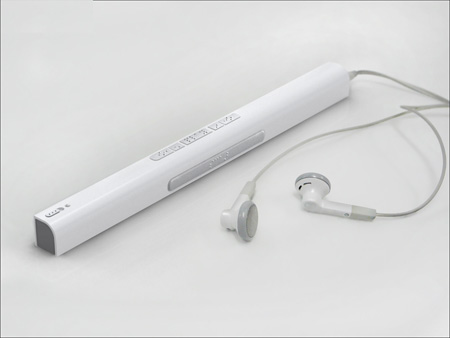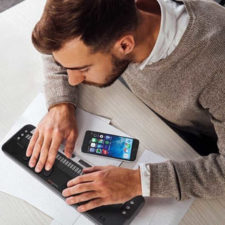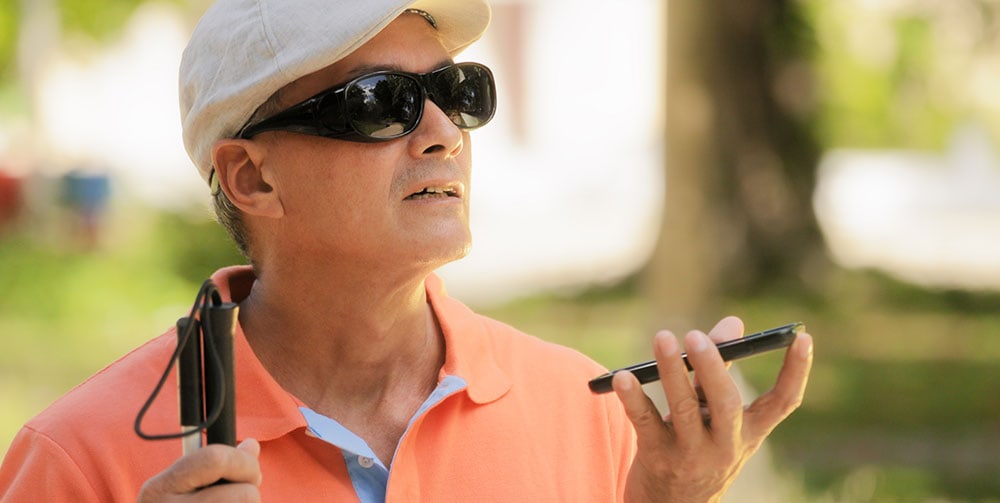OCR Devices for the Blind: Converting Print to Speech in Real-Time
OCR Devices for the Blind: Converting Print to Speech in Real-Time
Blog Article
Discover Innovative Tools Developed for the Visually Damaged
The advancement of cutting-edge tools for the visually impaired stands for a substantial improvement in accessibility and independence. Technologies such as wise glasses with AI abilities and mobile applications designed to give auditory summaries are reshaping everyday experiences for customers.
Smart Glasses for Navigating

Smart glasses developed for navigation are changing the way aesthetically damaged people connect with their atmosphere. These advanced gadgets utilize a combination of video camera innovation, expert system, and auditory comments to provide real-time information regarding surroundings. By utilizing barrier detection systems, smart glasses can notify users to possible threats, making it possible for much safer mobility in both unfamiliar and familiar settings.
The integration of GPS modern technology better boosts navigation capacities, allowing individuals to obtain acoustic directions as they move. This hands-free approach not only promotes independence but also empowers visually damaged people to navigate urban landscapes with enhanced confidence. In addition, several smart glasses are outfitted with attributes that recognize landmarks and street signs, giving contextual info that enhances the individual experience.
In addition, the growth of these tools is consistently advancing, with business functioning to improve the accuracy of object recognition and broaden the variety of navigational attributes. As clever glasses end up being more inexpensive and accessible, they hold the prospective to substantially transform every day life for aesthetically damaged users. Inevitably, these cutting-edge tools represent an essential step toward inclusivity, offering improved mobility and a greater sense of autonomy for people browsing the globe around them.

Mobile Application for Daily Living
Just how can mobile applications boost the lives of visually damaged people? Mobile applications are changing the way aesthetically damaged users browse their environments, manage day-to-day tasks, and access information. These applications supply crucial support with numerous capabilities, fostering freedom and improving lifestyle.
A number of cutting-edge mobile apps are developed specifically for daily living. For example, apps like Be My Eyes link visually damaged users with sighted volunteers through video telephone calls, enabling them to receive real-time aid with tasks such as reviewing tags or browsing unknown spaces. In A Similar Way, Seeing AI, established by Microsoft, makes use of fabricated knowledge to describe surroundings, checked out message, and determine items, effectively changing a mobile phone into an effective tool for day-to-day aid.
Furthermore, navigation applications customized for the aesthetically damaged, such as Aira and BlindSquare, provide audio-based instructions and ecological information, allowing customers to traverse their environments safely and with confidence. Past navigating and prompt assistance, mobile applications also sustain company and job administration, with attributes that help individuals establish suggestions, develop to-do lists, and track appointments. In summary, mobile applications function as important resources, encouraging visually damaged individuals to lead even more independent and meeting lives.
Wearable Technologies for Support
Empowerment through innovation is significantly evident in the realm of wearable gadgets created to assist visually impaired individuals. These cutting-edge devices integrate flawlessly into every day life, improving navigation and providing crucial responses to users. Smart glasses furnished with cameras can recognize faces walk in eye appointments and check out text aloud, allowing customers to connect more confidently in social and specialist settings.
One more notable improvement is the use of haptic feedback systems in wearable tools. These systems make use of resonances or various other responsive signals to share info about the customer's setting, such as barriers or changes in surface, enhancing movement and safety and security. Wearable modern technologies likewise include wristbands that link to smart devices, notifying individuals to notifications with refined resonances, thus enhancing connection without reliance on aesthetic signs.
As these technologies remain to evolve, they are not only enhancing self-reliance for visually damaged individuals yet likewise fostering a higher sense of addition in culture. By bridging the gap in between difficulties faced in everyday living and the potential for autonomy, wearable technologies serve as critical tools in the pursuit for equal rights and empowerment for those with visual disabilities.
Audio Description Tools
Sound summary devices play a critical role in boosting accessibility for aesthetically impaired people, supplying them with the ability to engage with aesthetic media. Smart glasses for the visually impaired. These tools provide narrated descriptions of vital visual components in movies, television programs, and live performances, guaranteeing that users can totally hop over to here comprehend the context and emotions shared via visuals
Sound description can be integrated into various platforms, consisting of streaming solutions, cinema screenings, and live theater. Lots of popular streaming services currently consist of audio summary as an ease of access feature, allowing customers to pick it quickly. In enhancement to traditional media, specialized applications likewise exist, offering audio summaries for art exhibitions, museums, and other social events.
The efficiency of audio description depends upon the skill of the storytellers, who must convey aesthetic details succinctly without diminishing the initial sound. Technologies in this field are also leading the method for more tailored experiences, where individuals can adjust the degree of information and pacing according to their choices.
Braille Innovations and Tools
Braille advancements and tools have actually dramatically changed the means aesthetically damaged people communicate with text and details. Modern innovations have led to the growth of flexible devices that enhance literacy and self-reliance among customers. Especially, Braille display innovations have developed, permitting for vibrant analysis experiences. These devices transform electronic message right into Braille, allowing users to access a huge range of information on tablets, smartphones, and computers.
Furthermore, portable Braille notetakers integrate traditional Braille input with modern-day capabilities, helping with note-taking, organizing, and paper editing and enhancing on the go. OCR devices for the blind. These compact tools frequently feature text-to-speech capacities, bridging the space in between Braille and auditory information
Furthermore, cutting-edge Braille printers have arised, permitting users to generate Braille labels, files, and academic materials effectively. This ease of access fosters greater engagement in instructional and specialist atmospheres, inevitably advertising inclusivity.
Furthermore, research right into clever Braille technologies proceeds to expand. Gadgets that include expert system are being explored to offer real-time navigating help and contextual details, enhancing the user experience in diverse setups. Overall, these technologies show a dedication to empowering visually impaired individuals through technology, guaranteeing they can easily accessibility and involve with the globe around them.

Conclusion
The development of cutting-edge tools for the visually damaged significantly boosts independence and high quality of life. These modern technologies not just foster better incorporation yet likewise promote autonomy in daily tasks, large glasses ultimately adding to a more available and fair culture for visually impaired people.
As smart glasses become extra available and inexpensive, they hold the possible to significantly transform daily life for visually damaged customers. Mobile apps are changing the method aesthetically damaged users navigate their atmospheres, manage day-to-day tasks, and accessibility details. Apps like Be My Eyes link visually impaired users with sighted volunteers via video clip calls, enabling them to obtain real-time assistance with jobs such as reviewing tags or navigating strange areas.Additionally, navigating apps tailored for the aesthetically damaged, such as Aira and BlindSquare, supply audio-based directions and ecological information, enabling users to traverse their surroundings safely and confidently.The improvement of ingenious devices for the visually damaged significantly improves self-reliance and quality of life.
Report this page